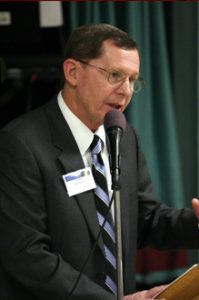I have mixed emotions every year when we announce our annual National High School Essay Contest in January and again when we announce the winners in June. On the negative side, it’s shameful that there’s a need for high school students to think and write about our country’s ongoing epidemic of gun violence. Those of us in older generations should have stopped this epidemic long ago.
On the positive side, though, I’m glad that we’re able to send the winning students their monetary awards, and I’m glad that we’re able to provide them with a platform to publicly express their views on the subject of gun violence. I’m also struck by how much more sense the high school students make than almost anyone else in our country when it comes to addressing the causes of – and remedies for – our gun violence epidemic. In fact, I’d go so far as to say that if you want to know how to stop our country’s shameful epidemic of gun violence, don’t listen to the so-called “progressive media;” to elected officials on either side of the aisle; even to other gun violence organizations; and certainly not to the majority of our current Supreme Court justices. Instead, read what our 2025 National High School Essay Contest winners have to say.
The prompt for our 2025 essay contest was the following excerpt from Supreme Court William O. Douglas’s opinion in the 1972 case of Adams v. Williams:
A powerful lobby dins into the ears of our citizenry that these gun purchases are constitutional rights protected by the Second Amendment, which reads, “A well regulated Militia, being necessary to the security of a free State, the right of the people to keep and bear Arms, shall not be infringed.”
There is under our decisions no reason why stiff state laws governing the purchase and possession of pistols may not be enacted….There is no reason why all pistols should not be barred to everyone except the police.
We received more than 600 entries from high school students across the country in this year’s contest. In the essay contest instructions, we announced that we would be awarding a total of at least $15,000 in scholarships to twelve winners, with the option of providing additional awards, as we’ve done in most past years, if we received more than 12 outstanding essays. Again this year, our essay readers felt there were definitely more than 12 outstanding essays, and we are therefore awarding a total of $21,600 in scholarships divided among 32 winners.
As in past years, many students have not felt secure in having their names and/or the names of their high schools published in association with their essays. I don’t blame the students who chose not to reveal this information. Rather, I blame the toxic political culture in our country – a culture that has gotten dramatically worse since Donald Trump began his second term as President in January of this year – that makes students not only fear for their lives every day they go to school, but that makes them fear retaliation if they openly express their views country’s shameful epidemic of gun violence. It is part of our mission at Americans Against Gun Violence to replace this toxic culture with intelligent and objective public discourse.
This year’s scholarship awards bring the total sum of awards that we’ve given students in the eight-year history of our national high school essay contest to over $132,000. I hope that you’ll read a representative sample of this year’s winning essays and that you’ll be as inspired as I am by the frankness, the poignancy, the idealism, and the plain common sense that the students display in their essays. And I also hope that you’ll consider making a donation to the Americans Against Gun Violence essay contest fund to help ensure that we’re able to continue to offer our national high school essay contest in future years. Donations to support our essay contest fund are tax deductible to the full extent allowed by state and federal laws, and 100% of donations to the essay contest fund go directly to student awards.
Instead of me going on anymore about how great this year’s essays are, I’ll end here so that you can go to the High School Essay Contest page and read some of them yourself.
Thanks for your support of Americans Against Gun Violence and our annual High School Essay Contest. And thank for helping show the students that there are those of us in the United States of America who love our country’s children and youth more than its guns.
Sincerely,

Bill Durston, M.D.
President, Americans Against Gun Violence


